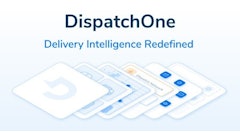
In the current global logistics landscape, the phrase “supply chain” frequently presages a tale fraught with uncertainty over the last two years. Those following the recent root causes of empty shelves and inflationary pricing trends are reminded of ships backed up in ports waiting to unload, rising oil prices, food shortages and the Ever Given stuck in the Suez Canal. Even as global supply chain’s resilience continues to be repeatedly tested with lingering aftereffects of the pandemic and stressors from geopolitics, companies have responded with several innovations and creative ways to tackle the issues. The pandemic-accelerated last mile crisis has exposed the faults of decades old just-in-time practices, ushering in new, innovative solutions.
How are supply chains changing?
Companies are currently exploring several technology driven innovations such as improving the user experience, artificial intelligence (AI)-based forecasting, real-time data to improve visibility, optimizing warehouse locations and delivery systems. Large retailers are being disruptive in every facet of the supply chain, experimenting with new strategies to discover what approaches work best.
The pandemic and subsequent supply shocks have exacerbated a long-term trend of driver shortages and high turnover. Driven by headwinds such as aging drivers and the inability to attract younger drivers due to shift in working preferences, companies are dealing with driver turnover at around 90%, increased cost of hiring and higher wages.
But driver retention isn’t just impacted by insufficient pay. Variability in week-to-week schedules, leads to high variability in pay. And with lack of control over driver schedules, delays at customer stops the problem of variability in pay is further exacerbated.
Even as companies bring technology to address visibility issues across the supply chain, data-driven solutions are necessary to improve better planning and coordination.
Companies can address this by better coordinating with fleet managers and dispatchers. One potential fix is to use AI-based systems that give drivers better revenue miles, lowers empty miles to minimize dwell time, comingles dedicated fleets and conducts multi-DC network optimizations.
Many companies are exploring such planning systems as a remedy. A scalable, real-time, dynamic system that optimizes a fleet of trucks and suggests the optimal route for a driver will maximize a driver’s pay, minimize week-to-week variability, and significantly address the key factors that influence driver turnovers. Such an approach can ease the burden on planners constantly trying to tame the chaos of a network, improve on-time delivery and maximize profits for the carrier.
Where could such an innovation prove to be successful? Take a large auto original equipment manufacturer (OEM), for example. This OEM had struggled to manage the cost of shipping vehicles from distribution centers to dealerships. The auto manufacturer used a mixed fleet of captive and third-party carriers. While symptomatic issues in the network such as lack of timely capacity, or poor utilization of haul-aways were concerning, they weren’t the root cause. The problem was that this manufacturer was leaking value due to poor operations, planning, and leveraging of data. Ultimately, their solution was to utilize genetic algorithms to build an AI-based planning solution to build daily, dynamic schedules that maximized utilization of haul-aways, minimized miles and stops and ensured timely delivery of vehicles to dealerships. This has not only resulted in a more reliable and predictable revenue miles per week for the driver, but also maximized utilization of vehicle haul-aways, and overall lowered costs for the OEM while drastically improving delivery performance at the OEM’s vehicle distribution center.
This is just the beginning. As companies learn from the supply chain crises, innovative technology solutions that use data-driven approaches to enhance visibility, insights and actions across the supply chain will continue to explode. Even if the supply chain crisis eases up, these technologies and innovations will hopefully usher in a new age of global supply chain efficiency and resilience. The future looks bright—consumers can receive goods faster, companies can enjoy higher profit margins, and last mile employees can be better compensated. But it starts by coming up with a better way to deploy our precious human resources using technology solutions.
![Pros To Know 2026 [color]](https://img.sdcexec.com/mindful/acbm/workspaces/default/uploads/2025/08/prostoknow-2026-color.mduFvhpgMk.png?auto=format%2Ccompress&bg=fff&fill-color=fff&fit=fill&h=100&q=70&w=100)








![Pros To Know 2026 [color]](https://img.sdcexec.com/mindful/acbm/workspaces/default/uploads/2025/08/prostoknow-2026-color.mduFvhpgMk.png?ar=16%3A9&auto=format%2Ccompress&bg=fff&fill-color=fff&fit=fill&h=135&q=70&w=240)








